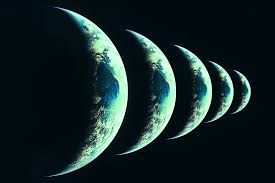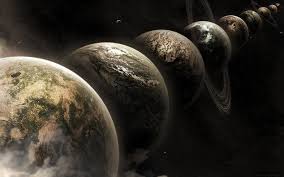Introduction
The idea that our universe might be just one of many has long fascinated scientists, philosophers, and storytellers alike. From science fiction novels and Hollywood blockbusters to the cutting edge of theoretical physics, the concept of a “multiverse” has grown from speculation to serious scientific inquiry. But what exactly is the multiverse theory? Does it mean there could be infinite versions of you living out different lives in parallel realities? In this article, we dive deep into the multiverse theory, examining its scientific roots, various interpretations, and the ongoing debate about whether alternate universes truly exist.

What Is the Multiverse Theory?
The multiverse theory proposes that what we consider the universe—the totality of space, time, matter, and energy—is not the only one. Instead, it suggests that there could be many universes, perhaps even an infinite number, existing in a broader cosmos. These universes could differ in fundamental ways, including physical laws, dimensions, and even versions of ourselves.
The term “multiverse” encompasses several different concepts across physics and cosmology. Some multiverse theories are speculative extensions of existing theories, while others arise from mathematical consistency or attempts to explain observations that seem puzzling within the framework of a single universe.
The Scientific Basis for the Multiverse
Several branches of theoretical physics support the possibility of a multiverse, although none have been proven experimentally. Here are the most notable theories:
1. The Many-Worlds Interpretation of Quantum Mechanics
One of the earliest and most famous multiverse ideas comes from quantum mechanics. Proposed by Hugh Everett in 1957, the Many-Worlds Interpretation (MWI) suggests that every time a quantum event occurs with multiple outcomes, the universe splits, creating parallel realities. For instance, if you flip a coin, in one universe it lands heads, and in another, tails. This interpretation solves the paradoxes of quantum measurement by removing the need for a single, observed outcome.
2. Cosmic Inflation and Bubble Universes
Cosmic inflation theory, which describes the rapid expansion of the universe after the Big Bang, implies the possibility of “bubble universes.” As inflation occurs, some regions of space may stop inflating and form separate universes with distinct physical properties. This leads to the concept of an “eternal inflation” multiverse, where new universes are constantly being created in a vast cosmic foam.
3. String Theory and the Landscape Multiverse
String theory posits that the fundamental constituents of the universe are not point particles but tiny vibrating strings. The theory requires extra dimensions beyond the familiar three dimensions of space and one of time. There are potentially 10^500 different configurations (or “vacua”) of these extra dimensions, each leading to a different universe with its own physical laws. This vast number of possible universes forms what is called the string theory landscape.
4. Mathematical Universes
Mathematician Max Tegmark proposed that all mathematical structures exist physically. According to this view, every logically consistent mathematical system corresponds to a real universe. This radical view expands the multiverse concept beyond physics into the realm of pure math, suggesting that reality itself is mathematical in nature.
Are There Infinite Versions of You?
A compelling aspect of the multiverse theory is the possibility that other versions of you exist. If there are infinite universes, and if each one contains slightly different outcomes, then it’s plausible that somewhere, there’s a universe where you chose a different career, married someone else, or even never existed at all.
This idea is particularly emphasized in the Many-Worlds Interpretation, where each decision or quantum event spawns a new branch. While this is a mind-bending concept, it’s important to note that these alternate “yous” are not accessible—they exist in separate, non-interacting branches of reality. So while intriguing, this version of the multiverse remains more philosophical than practical.

Challenges and Criticism
Despite its popularity, the multiverse theory faces significant criticism and skepticism, especially because it currently lacks empirical evidence. Here are the main challenges:
1. Unfalsifiability
A major issue with many multiverse models is that they are not falsifiable. That is, we cannot test them through observation or experiment. In science, a theory must be testable to be considered scientifically valid. Critics argue that multiverse theories are more metaphysical than scientific for this reason.
2. Occam’s Razor
Occam’s Razor suggests that the simplest explanation with the fewest assumptions is usually correct. Some physicists argue that invoking an infinite number of unobservable universes to explain our own is unnecessarily complex.
3. Anthropic Reasoning
Some versions of the multiverse are used to explain why our universe seems so finely tuned for life. The anthropic principle states that we observe a universe suitable for life because if it weren’t, we wouldn’t be here to observe it. Critics see this as a cop-out that avoids deeper explanations.
Evidence and Indirect Support
While no direct evidence for the multiverse exists, some observations could be seen as suggestive:
- Fine-tuning of Constants: The precise values of physical constants (like the strength of gravity) seem oddly suited for life. Some argue that a multiverse with varying constants could explain this.
- Cosmic Microwave Background (CMB): Some cosmologists have looked for patterns or anomalies in the CMB that might hint at collisions with other universes. So far, no conclusive evidence has emerged.
- Mathematical Consistency: Theoretical models like string theory that imply a multiverse are mathematically elegant and consistent with known physics.
Still, these are circumstantial at best and do not constitute proof.
The Multiverse in Pop Culture
The multiverse has become a staple of science fiction and pop culture. From Marvel’s multiverse-spanning storylines to TV shows like Rick and Morty, the idea of alternate realities has captured the public imagination. While these portrayals are often exaggerated, they serve an important role in making complex scientific ideas accessible—and exciting.
However, it’s important to distinguish entertainment from evidence. Pop culture tends to blur the line between theoretical speculation and established science, which can lead to misconceptions about what scientists actually believe.

Philosophical and Existential Questions
Beyond physics, the multiverse raises deep philosophical questions:
- What is reality? If infinite universes exist, what does that say about the nature of our own?
- Do we have free will? If every possible decision branches into a new universe, does choice have meaning?
- What is identity? Are alternate versions of you truly “you,” or separate individuals with different experiences?
These questions don’t have clear answers but add richness to the discussion of multiverse theory, pushing it beyond science into the realm of metaphysics and existential inquiry.
Future Directions in Research
While we may never directly observe another universe, advances in physics and cosmology may provide stronger support—or refutation—of the multiverse hypothesis. Areas to watch include:
- Quantum computing and quantum gravity research
- Deeper exploration of the cosmic microwave background
- Refinements in string theory and mathematical physics
- New frameworks that unify general relativity and quantum mechanics
Collaborations across disciplines—physics, mathematics, computer science, and even philosophy—will likely shape the next steps in exploring these profound questions.
Conclusion
So, do alternate universes exist? As of now, the answer remains speculative. The multiverse theory offers intriguing possibilities and is supported by several compelling theoretical frameworks, but it lacks direct empirical evidence. Still, it represents a bold and imaginative frontier of science, one that forces us to question our assumptions about reality, identity, and existence.
Whether or not we ever confirm the existence of alternate universes, the pursuit of understanding the multiverse pushes the boundaries of human knowledge. In doing so, it invites us to embrace both the mysteries and marvels of the cosmos, ever reminding us that the universe—or multiverse—may be far stranger and more wondrous than we ever imagined.
Read more:https://nfds.xyz/wp-admin/post.php?post=37&action=edit



